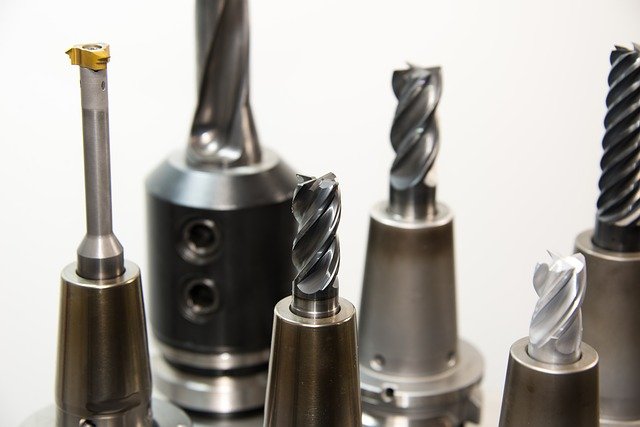Selecting an end mill for use in a particular task is one of the important steps in the entire machining process. This process is further complicated by the fact that individual tools will also come with their own unique geometries that are each crucial to the eventual result of your part.
It is a good idea to take certain factors into consideration before starting the process of selecting tools to make sure you choose one that will increase the tool life, cut down on cycle time and result in the creation of a higher quality product.

Cutting materials
The search for an end mill can be narrowed down considerably by having knowledge of the material that you intend to work with. All materials come with a distinct series of mechanical properties that provide them with unique properties when machining. Plastic materials for example need different tooling geometries and a different machining strategy than steel materials. Selecting a tool with geometries that are tailored to those particular characteristics will therefore help to improve both longevity and the general performance of that tool.
There are many different high performance mini end mills on the market that include tooling that has been optimized for use with hardened steels, medium alloy steels, aluminum alloys, plastics, composites, exotic alloys, free machining steels and highly abrasive materials.
If a selected tool will only be used for a single material type then selecting an end mill that is specific to that material is probably the best choice. End mills designed to be specifically used on a particular material offer tailored geometries and coatings, though those looking for more flexibility in their machining over a large range of materials should look for more general use end mills.
The operation
One or more operations may be involved in an application, with common operations in machining including the likes of traditional roughing, finishing, plunging, high efficiency milling, slotting and contouring. An awareness of the operations that will be required for a job means that a machinist will also have greater awareness of the necessary tooling involved.
Flutes
There can be an immense variation in the number of flutes on end mills but understanding how many you need is critical to the performance of a successful operation. Two flutes are enough to cope with large loads of chips while still allowing them to be freely ejected, though multi flute end mills offer a superior surface finish and enable the feed rate to be increased. Generally speaking the finish will always improve when there is a greater number of flutes and the core strength is stronger, though that does make ejecting chips more difficult.
The feed rates for the multi flute end mills will also need to be increased to stop the tool from burning or dulling.
Specific tool dimensions and coated tools
The dimensions of the tool required for a particular milling operation need to be taken into account, including the tool profile, the length of the cut and the cutter diameter.
Coated tools can help to boost performance when used within the right application, as they provide more aggressive running parameters, improved chip evacuation and prolong tool life.
Taking these factors under consideration will help you to find the strongest end mills for your particular needs.






